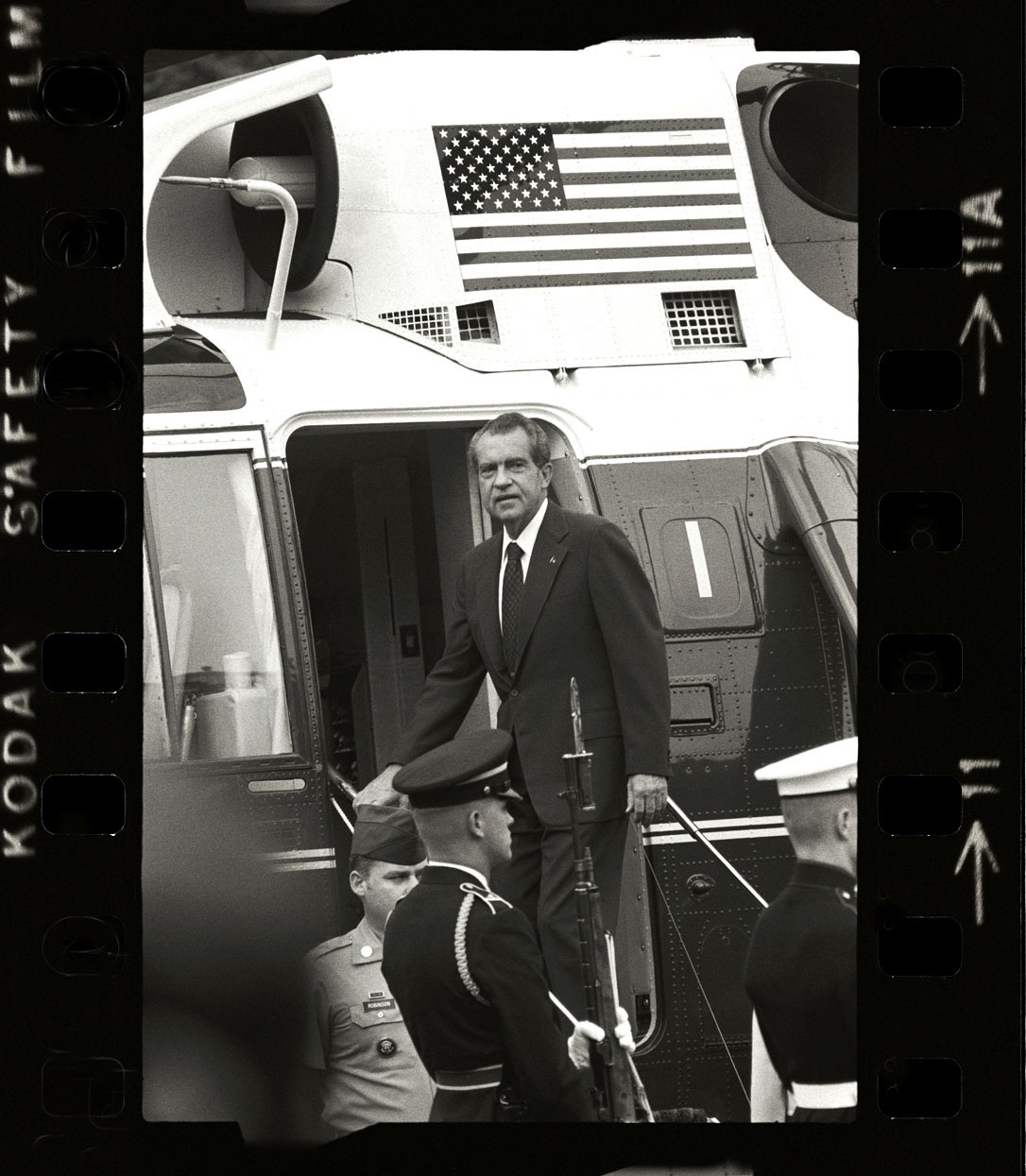
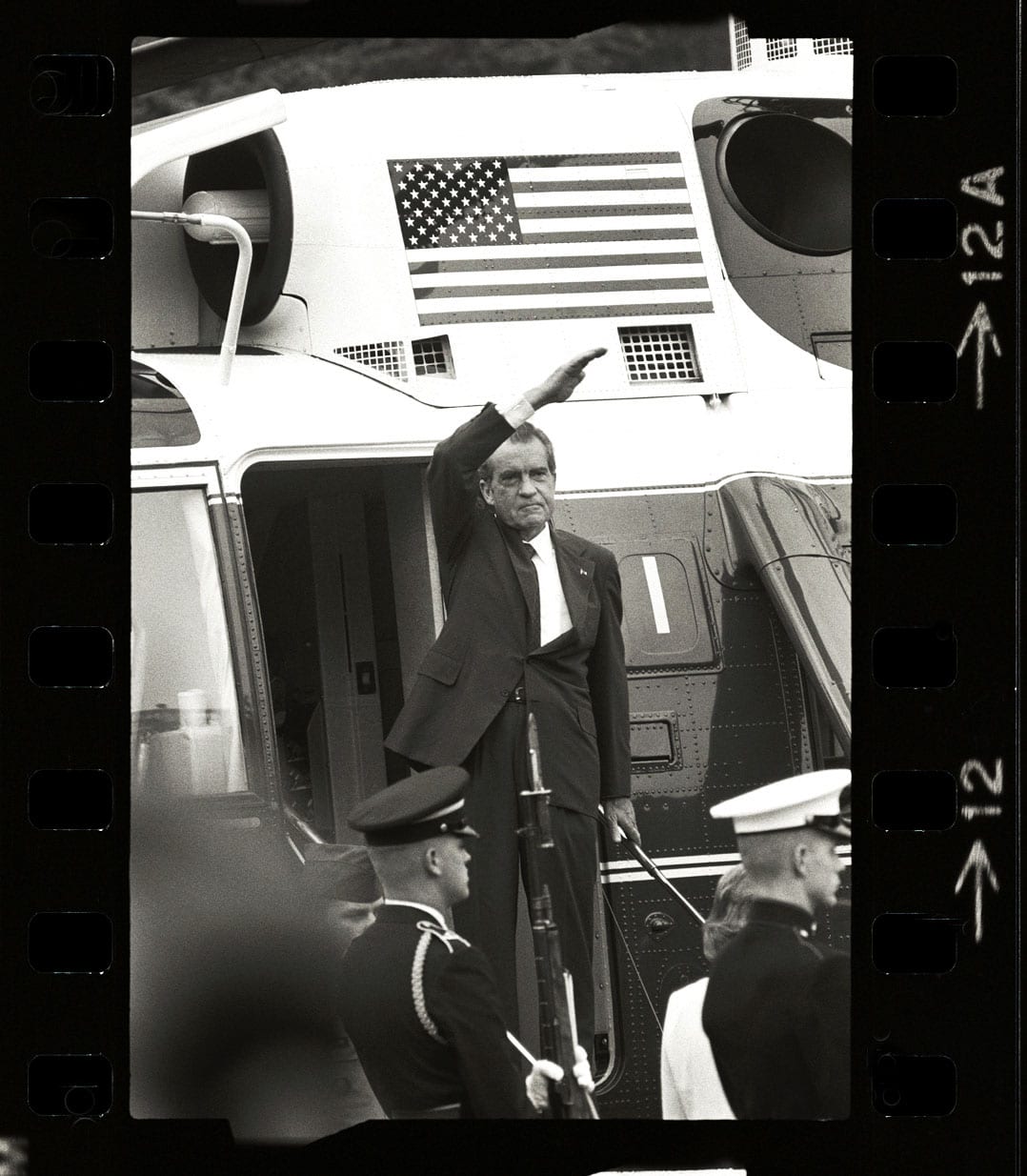
16 Frames
My job is to be there when history is made. August 9, 1974 was one of the biggest days, an historic twofer -- one president quit, and another was sworn in to replace him.
I was on the South Lawn of the White House crowded onto a photo stand with the rest of the press corps when President Richard Nixon, accompanied by his wife Patricia, and Vice President and Mrs. Gerald R. Ford, walked out of the White House to the white-topped presidential helicopter that would carry him away into political exile.
The night before that fateful Friday, President Nixon went on television to announce that he was going to resign over the events of Watergate. Had he not decided to leave voluntarily he would have been impeached in the House and then convicted and removed from office by the Senate for his transgressions. He was the first and only president to resign. Even though we are now 46 years past that event, I still feel the shock from the moment. When I think about it, the event plays before me in slow motion.
There are sixteen frames that I made of Nixon climbing up the six steps of Army One until he ducked inside. At the time I thought the best image of that sequence was the second one, frame 12, where he gave a snappy wave, arm at a 45-degree angle over his head, and lips pursed. It definitely was dramatic, serious, and carried the weight of the moment.
History is a process of steeping. Sometimes the true flavor of a moment doesn’t emerge quickly. In this case it took more than 45 years. I recently came to the conclusion that the frame before the wave, No. 11, carries the most impact. Nixon’s look, captured in 1/500th of a second, as he glanced up at the South Portico of the White House for the last time, caught his flash of bitter realization. The game was over, he had lost, and would never see the place again as President of the United States. I can’t imagine the pain he must have been feeling at the moment, and even though it appears he’s trying to mask the feeling, it is palpable.
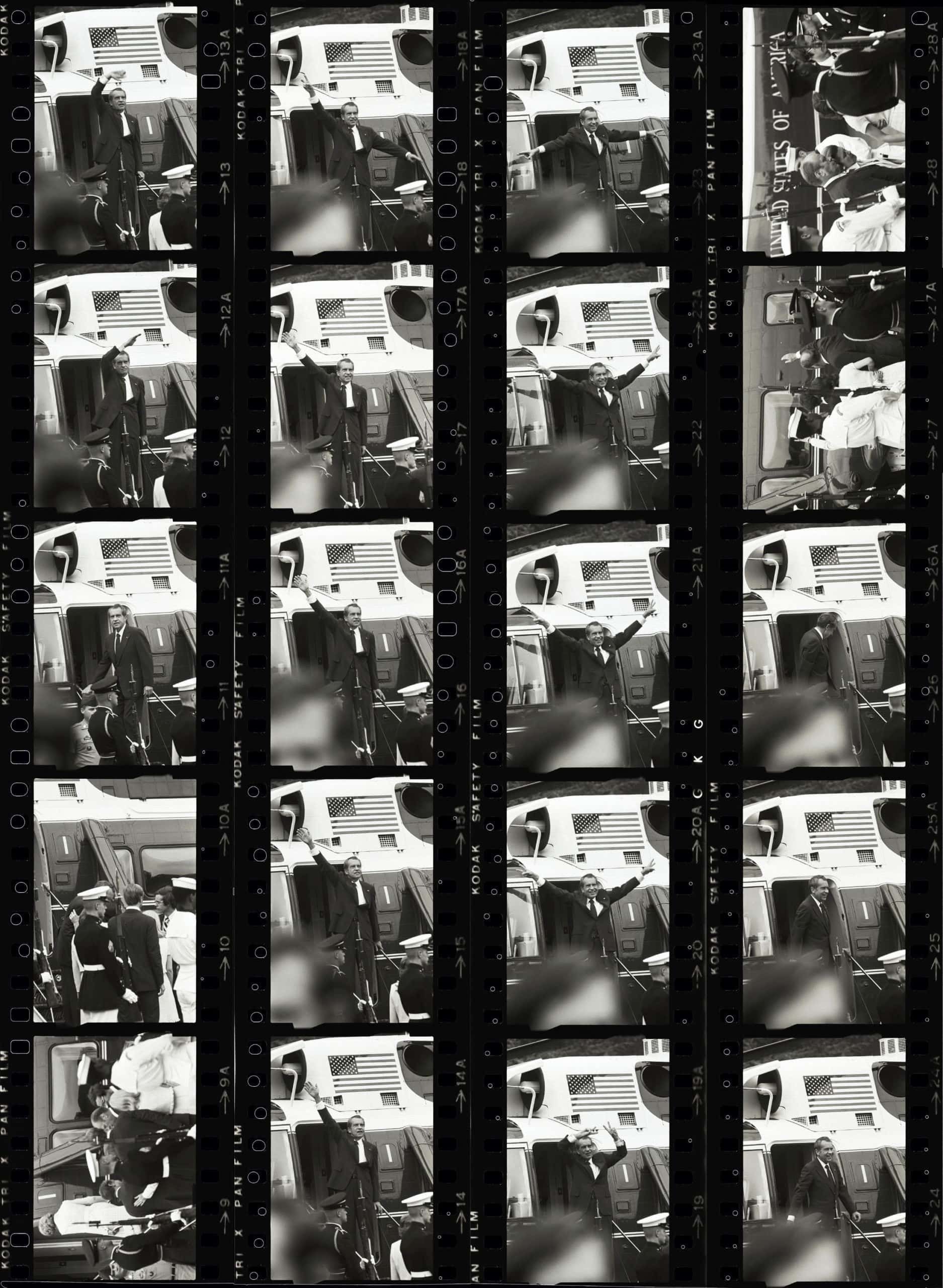
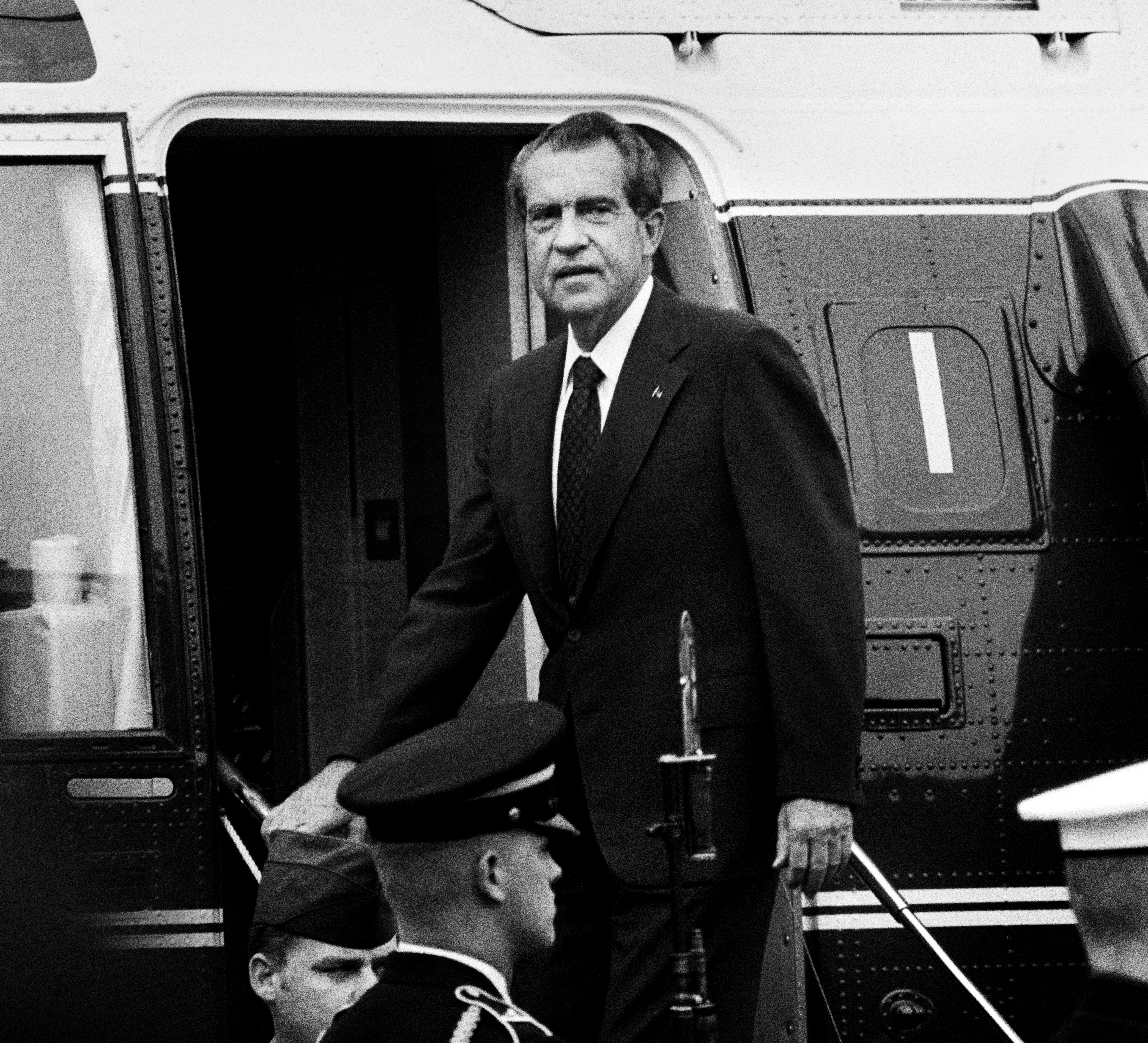
In the remainder of those 16 frames, what happened after that ricochet reflection was the hard tack back to reality. The grim wave expanded into a double “V” campaign-like moment that attempted to reclaim the glory days. His upbeat gesture was spurred by the White House staff who gathered on the South Lawn to see their disgraced leader off. They cheered him. But it wasn’t a campaign rally, rather it was one of the darker days in presidential history.
In less than 12 seconds from start to finish it was over. Sixteen frames, numbers 11 to 26, duly recorded for posterity. Frame 26 shows him ducking to enter the helicopter.
The next two photos, frames 27 and 28 show Vice President Gerald R. Ford, the man who would shortly become president, and Mrs. Ford, give Nixon one last wave goodbye through the window. They then turn and solemnly walk away.
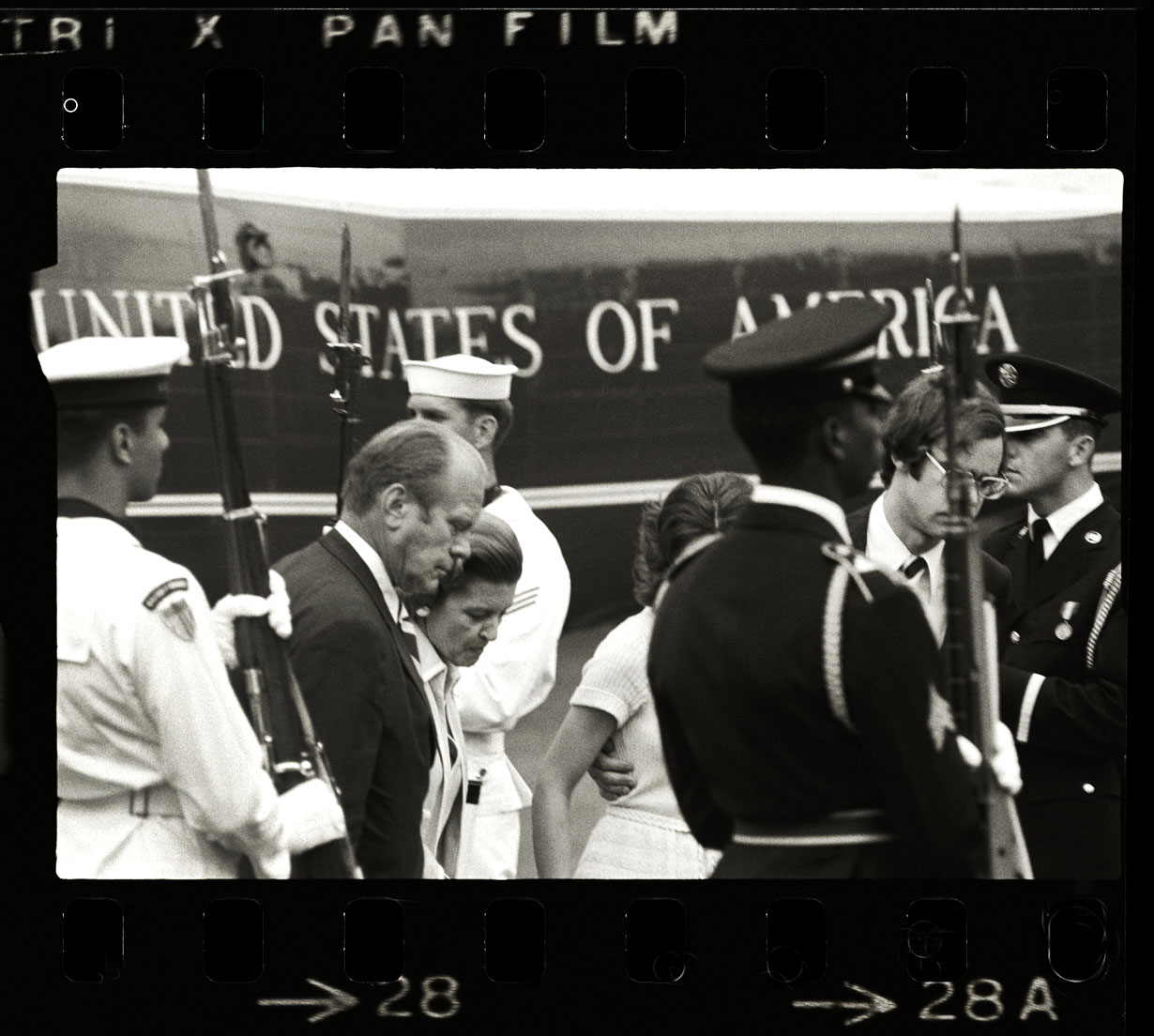
Later that evening the new president would offer me the position as his chief White House photographer. Because my job is about history, and documenting those who make it, I took him up on it!